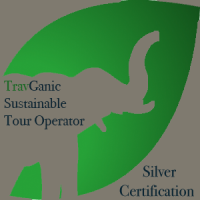Trekking in the Himalayas is a favourite bucket-list item for adventure lovers worldwide. Sadly, such trips have turned deadly in the past due to ill-preparedness and recklessness when trekkers have died of altitude sickness. Altitude sickness strikes you if you are ill-prepared, and it doesn’t matter if you are trekking on your own or have booked a trekking package with a tour operator.
We’ve all heard of altitude sickness—but how often does it turn deadly? Here’s what everyone is travelling to high elevations to know.
What is altitude sickness? Rapid Ascend
Altitude sickness is also known as acute mountain sickness (AMS). People ascend rapidly without giving their bodies enough time to get used to the reduced amount of oxygen in the higher elevation. Our bodies are equipped differently to adjust to make this adjustment, but it takes more time than others. AMS’s mild signs and symptoms are headache and nausea; fortunately, for most sensible people going to high altitude in a controlled ascent, this is as bad as it gets. It will progress further if a person keeps going to a higher elevation. It can lead to dizziness, difficulty breathing even while resting, vomiting, ataxia, fluid accumulating in the lungs (HAPE), and swelling around the brain (HACE) – all of which can be fatal if not treated as soon as possible.
Young, fit people—are at higher risk.
The individuals usually struck by altitude sickness are those who fly in from the lowlands and continue climbing higher without stopping to allow the body to acclimate to the altitude. The recommended guideline is not to go above 300 meters above 3500 meters in elevation and stop for an acclimatization day every 1000 meters. It’s common to have a headache and not feel great for the first few days you’re in altitude. Luckily, those symptoms usually pass after a rest day for acclimatization. One reason young, fit people may be at risk for more complications is because they may continue to push themselves. It doesn’t matter if you come in last in your group. It will help if you enjoy the scenery and environment you are in and do not suffer. If you have these symptoms and you continue to ascend, things are only going to get worse.
Climb high, sleep low
No matter how tired you are, a good practice would be to rest for some moments when you get to your camp/lodge, walk to a higher point, and come down. By doing this, your body gets less oxygen at the higher point, so when you come down to your stop for the night, your body will notice more oxygen no matter how slight the difference is – it makes a difference.
Altitude affects everyone differently.
People who live at higher elevations are less likely to get altitude sickness during hiking in the mountains than those who live at sea level. Even two people living in the same place could react differently to a higher altitude. Some people are more sensitive to high altitudes than others. Of course, it doesn’t help if you come from a tropical country at sea level.
Dehydration and heat exhaustion has similar symptoms to AMS. To avoid confusion, cover yourself adequately with a hat, and full sleeve shirt, apply sunblock and lip balm of factor 30 at least, drink plenty of fluid, and take your time, do not rush. Make sure the colour of your urine is pale/clear. If it is yellow, you need to rehydrate. Making sudden movements can cause a spell of dizziness above 3500 meters.
When symptoms strike, head for lower ground.
Everyone should remember that if you have a headache, do not take it higher. Lookout for loss of balance (ataxia) or lack of coordination on simple tasks like walking in a straight line or tying up shoelaces. These symptoms are similar to when someone is suffering from hypothermia. Ensure the patient is warmly dressed and has a woollen or fleece hat. These simple tests can differentiate between a mild annoying mountain sickness or the beginning of something more serious such as cerebral oedema (brain swelling). There is medicine to treat acute mountain sickness, but the best treatment for any altitude-related condition is to Descend, Descend, Descend! You will be amazed at how quickly the affected person starts feeling once you have descended 300 meters but try to bring the patient lower by about 500 meters. The increased atmospheric pressure and improved delivery make a world of difference.
Are you planning a trekking vacation? Take time to acclimate—and check with your doctor.
If you plan to do a rigorous trek above 3500 meters, you need to consider taking a few days to adapt to the trek’s starting elevation before proceeding to a higher altitude. These days with the internet, you can always compare several itineraries for your trekking holiday, and you will soon find a pattern of the programs and stick to it as a guideline. Drink plenty of water, 3-4 litres daily, to prevent dehydration, so you know your headache could be due to AMS and not dehydration.
It is also a good idea to visit your doctor – preferably someone familiar with high altitude- before you go on your trekking holiday to evaluate your health properly. Doing some training to improve your fitness is always helpful. Remember to take it slow and steady prevention is better than cure. Safe Trekking!
















